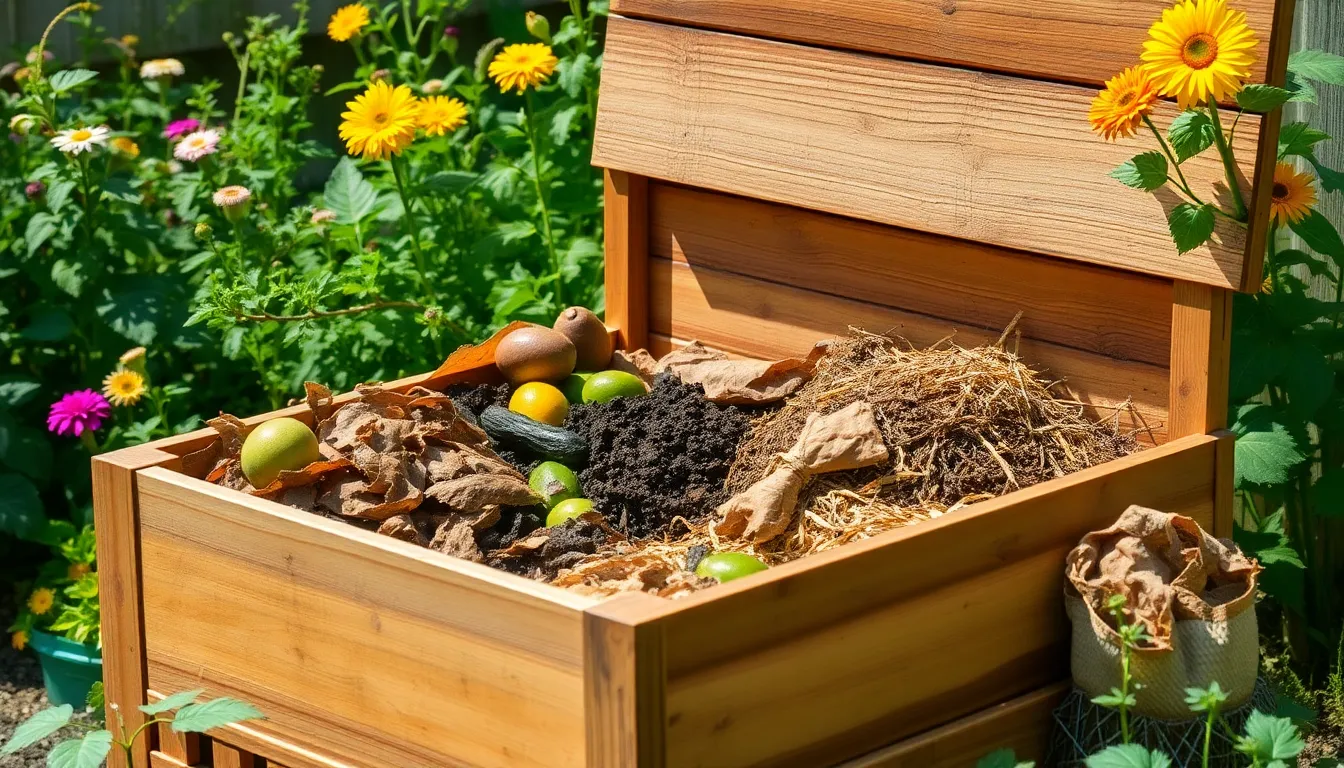Embarking on the journey to create a thriving compost pile is like tapping into nature’s most ingenious recycling system. Whether you’re a gardening novice eager to enrich your soil or a seasoned green thumb looking to refine your techniques, understanding the common pitfalls can set you on a path to success. Composting is more than just a way to reduce waste; it’s the heartbeat of a vibrant, sustainable garden that nurtures both plants and the planet.
In this article, we’ll delve into the frequent missteps that can hinder your composting efforts and provide you with practical, actionable solutions. You’ll discover how to balance your compost ingredients, maintain the right moisture levels, and ensure adequate aeration—all essential components for creating that coveted “black gold.” By the end, you’ll not only feel confident in starting your own compost pile but also equipped to troubleshoot any surprises along the way.
Adding Wrong Compost Materials
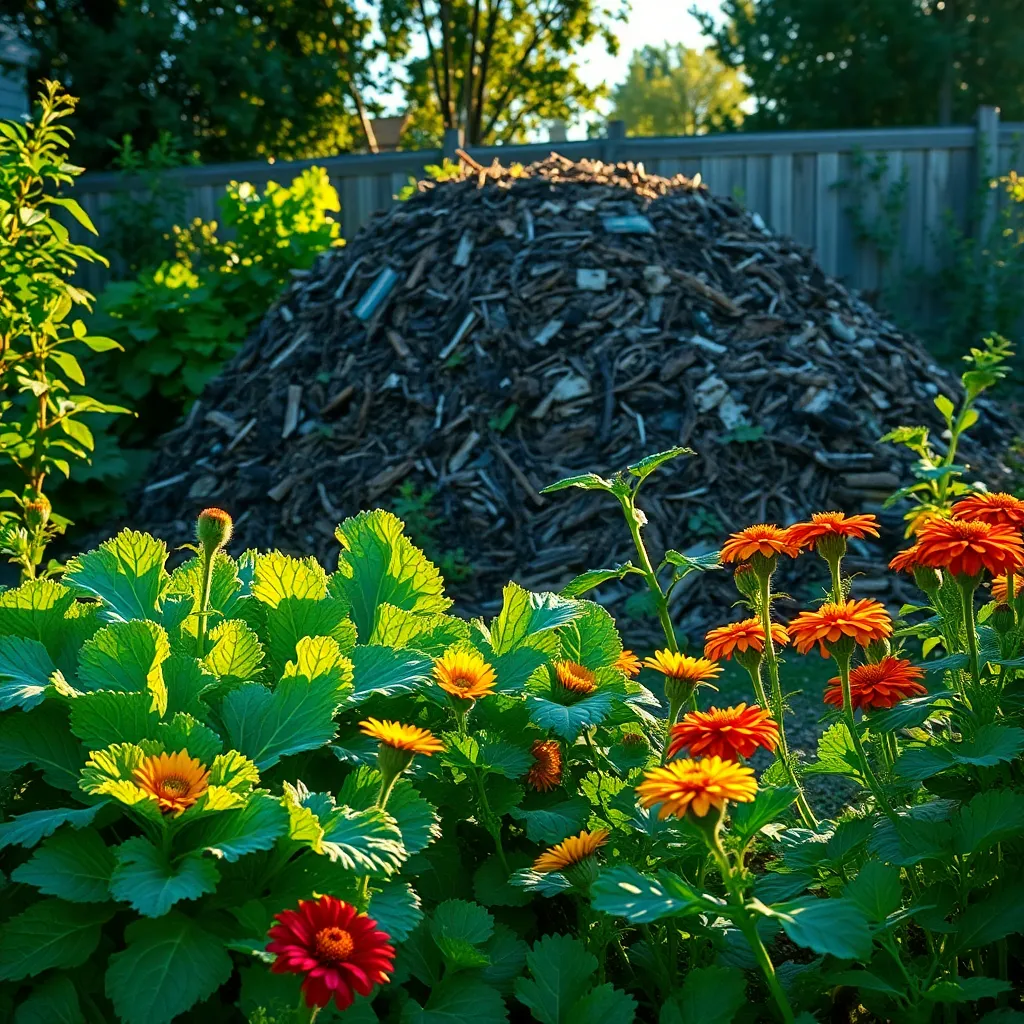
Adding the wrong materials to your compost pile can hinder its effectiveness and lead to unpleasant odors. It’s important to avoid placing meat, dairy products, and oils in your compost, as these can attract pests and create an imbalance in the pile.
Instead, focus on incorporating a balanced mix of green and brown materials. Green materials like vegetable scraps, coffee grounds, and grass clippings provide nitrogen, while brown materials such as dry leaves, straw, and cardboard add carbon, which is essential for decomposition.
Even some seemingly harmless organic materials should be used with caution. Citrus peels and onions can be added in small amounts, but too much can make the compost too acidic and slow down the breakdown process.
For experienced gardeners looking to refine their composting technique, consider chopping or shredding materials before adding them to the pile. Smaller pieces decompose more quickly, accelerating the composting process and resulting in rich, ready-to-use compost for your garden.
Ignoring Compost Moisture Levels
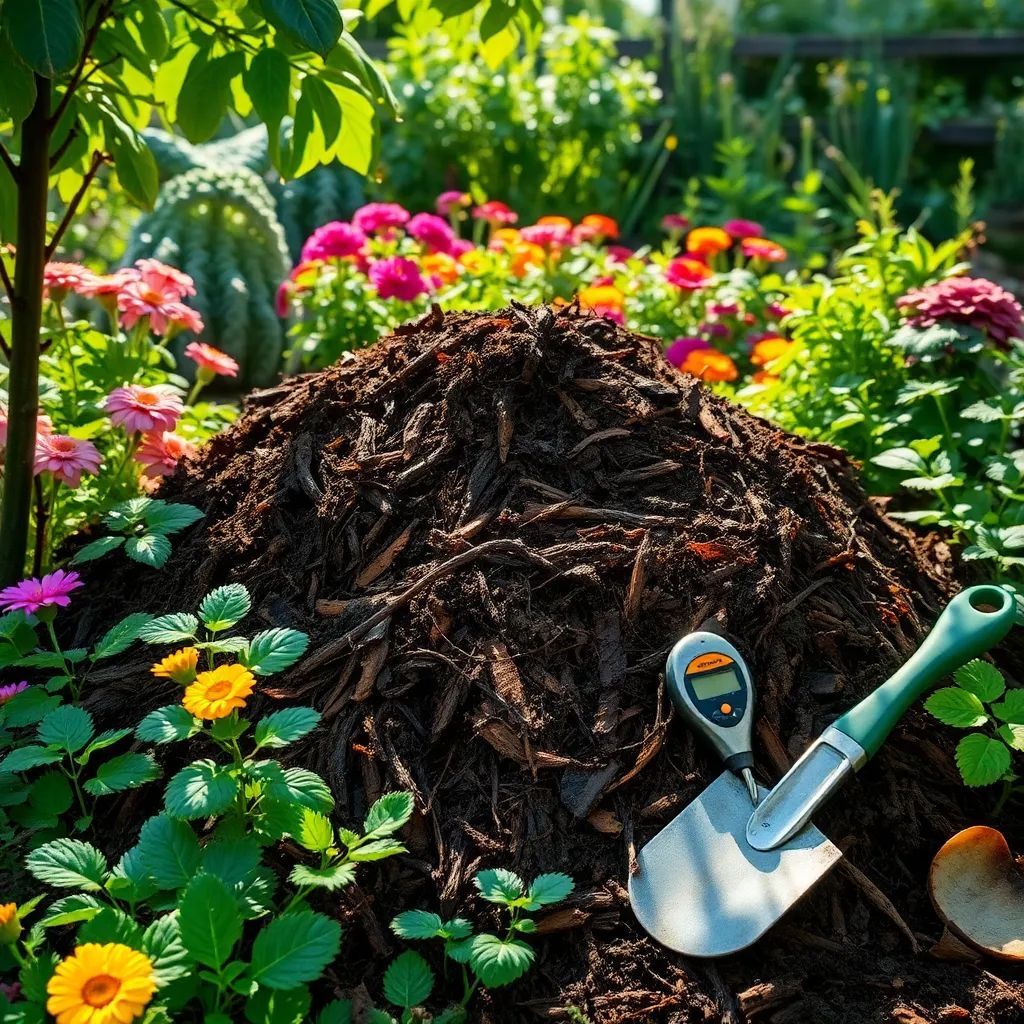
Moisture levels in your compost pile are crucial for maintaining an active decomposition process. If your compost is too dry, beneficial microbes and insects cannot thrive, slowing down the breakdown of materials.
To maintain the right moisture balance, aim for a consistency similar to a wrung-out sponge. Regularly check your pile by squeezing a handful—if it feels dry, it’s time to add water.
Conversely, an overly wet compost pile can become compacted, leading to anaerobic conditions that cause foul odors. If your compost is too soggy, mix in dry materials such as straw, shredded cardboard, or dry leaves to absorb excess moisture.
Experienced gardeners often cover their piles with a tarp to regulate moisture levels, especially during heavy rain or dry spells. This simple step can help maintain optimal conditions for decomposition, ensuring your compost is nutrient-rich and ready for use.
Lack of Proper Aeration
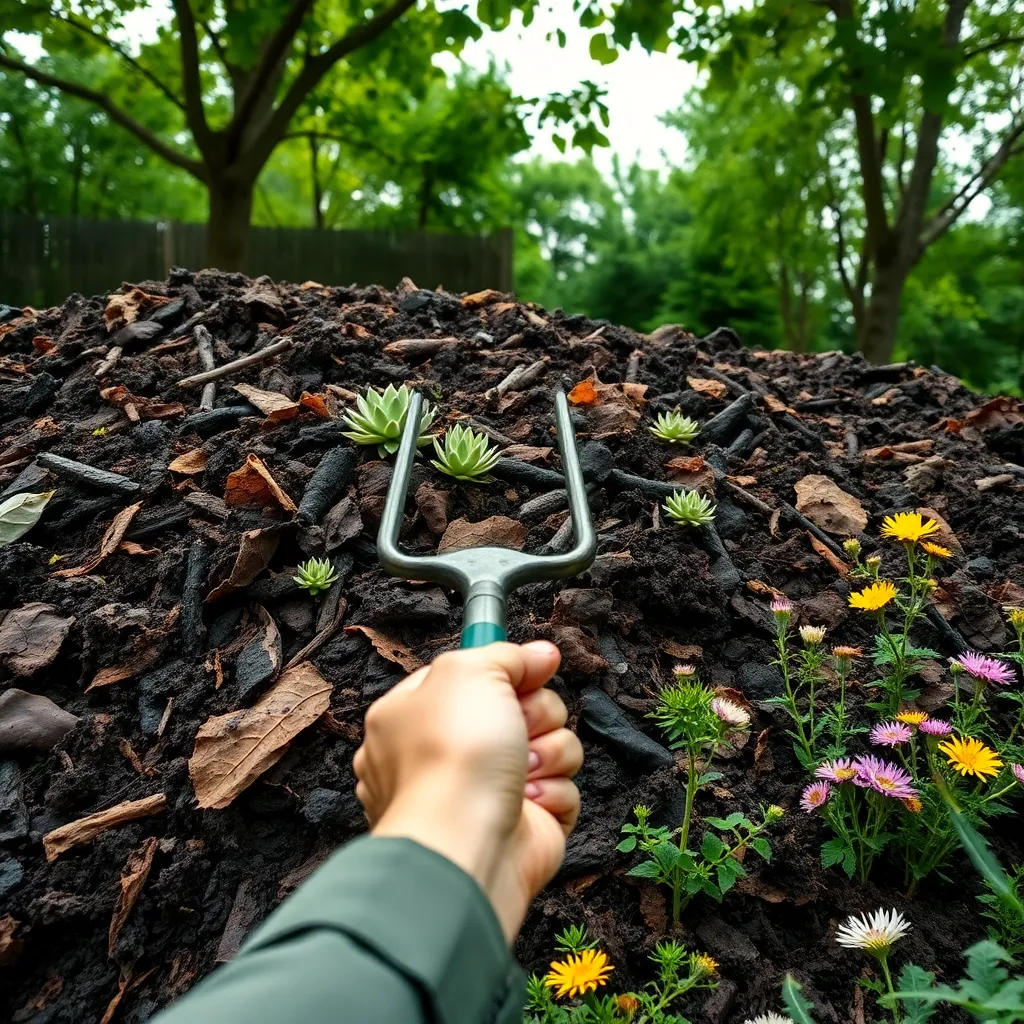
Proper aeration is crucial for an effective compost pile, as it ensures that oxygen reaches the microorganisms breaking down organic material. Without adequate airflow, your compost pile can become anaerobic, leading to unpleasant odors and slower decomposition.
To improve aeration, consider turning your compost pile every one to two weeks using a pitchfork or compost turner. This simple action introduces fresh air into the pile, promoting faster breakdown and a healthier compost mix.
A well-aerated compost pile also maintains a balanced temperature, which is vital for efficient decomposition. You can enhance airflow by incorporating coarse materials like straw or small branches, which create natural air pockets within the pile.
Advanced gardeners might use a compost aerator tool, which can be inserted into the pile to loosen and mix materials without the need for a complete turnover. Additionally, building your compost pile on a raised platform or using a bin with ventilation holes can further enhance airflow and efficiency.
Unbalanced Green-to-Brown Ratio
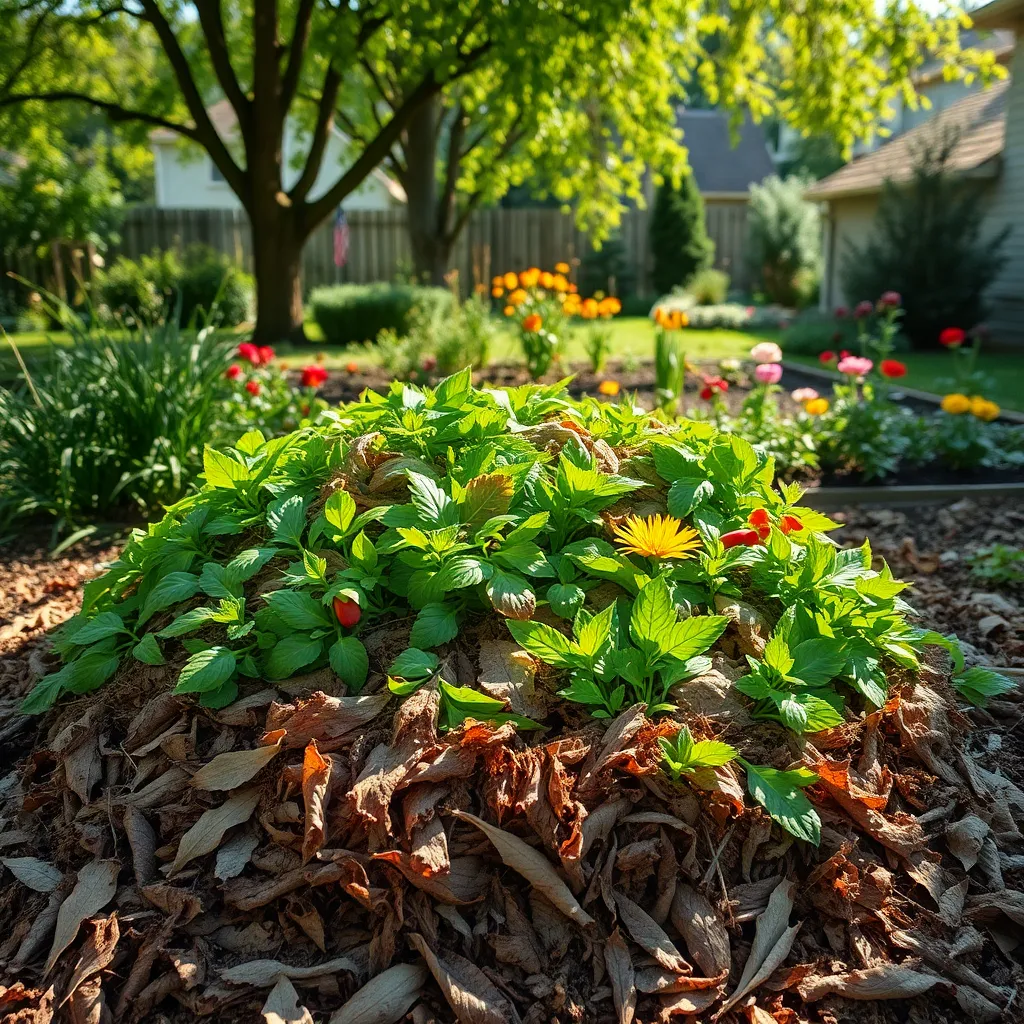
One common mistake when starting a compost pile is having an unbalanced green-to-brown ratio. This balance is crucial for effective decomposition, with green materials providing nitrogen and brown materials providing carbon.
To maintain a healthy compost pile, aim for a ratio of about 2:1 browns to greens. This means for every bucket of green materials, like kitchen scraps or grass clippings, add two buckets of brown materials, such as dry leaves or shredded newspaper.
Green materials can include fruit and vegetable scraps, coffee grounds, and fresh grass clippings. On the other hand, brown materials are items like dried leaves, straw, and small twigs, which help to aerate the pile and prevent it from becoming too moist.
Beginners should start by layering these materials, ensuring each layer is not thicker than a few inches. For more experienced gardeners, consider turning the pile every few weeks to enhance aeration and speed up decomposition.
Overlooking Temperature Fluctuations
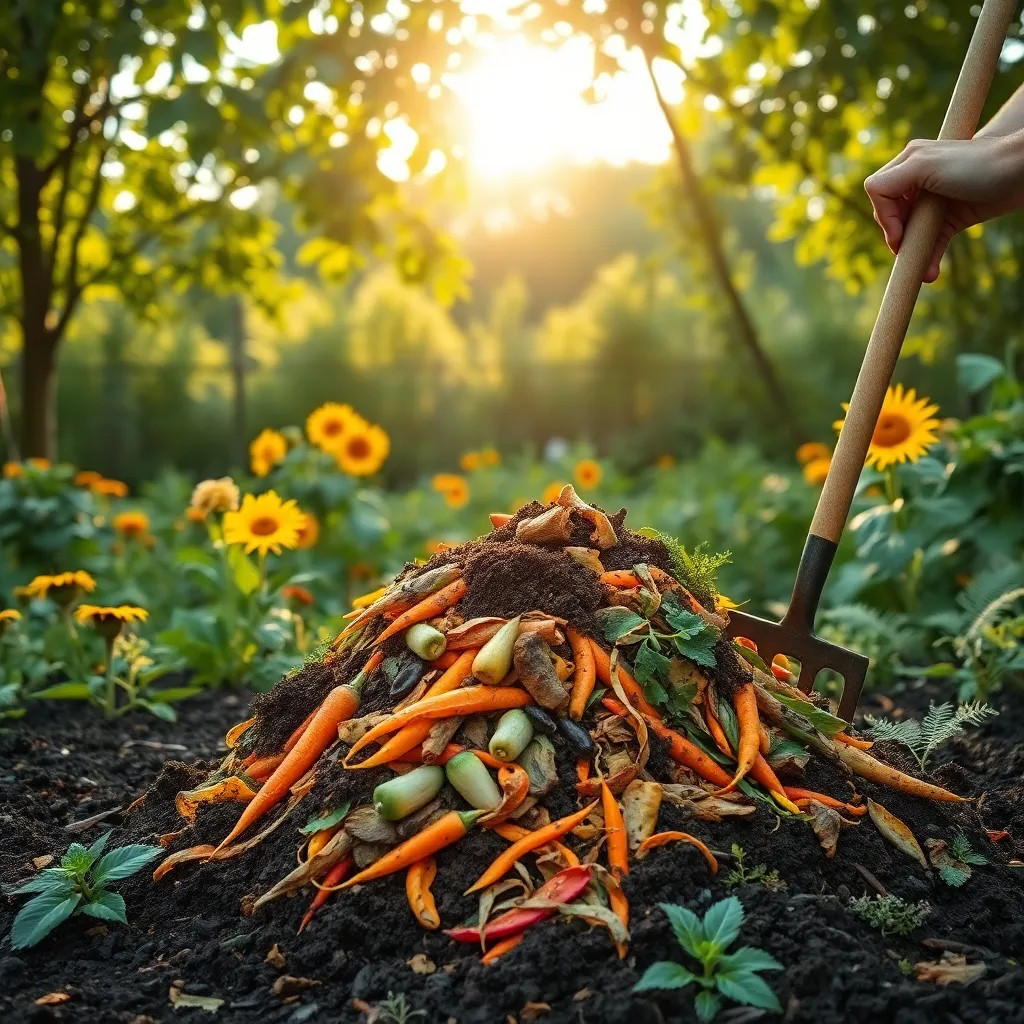
Temperature fluctuations can significantly impact the efficiency of your compost pile. Many gardeners overlook this factor, leading to slow decomposition and nutrient loss.
To maintain an optimal temperature, ensure that your compost pile is at least three feet wide and tall. This size helps retain heat, which is crucial for the microbial activity that breaks down organic matter.
During colder months, consider insulating your compost pile with straw or a tarp. This simple step can help sustain the internal temperature, keeping the decomposition process active even when external temperatures drop.
In warmer climates, it’s equally important to protect your compost from overheating. Positioning your pile in partial shade can prevent it from drying out or overheating, which can kill beneficial microbes.
Monitoring the temperature with a compost thermometer can provide valuable insights into the health of your pile. Aim to keep the internal temperature between 135°F and 160°F for optimal microbial activity and pathogen control.
Adjusting the moisture content is another way to manage temperature effectively. If your pile is too dry, adding water can boost microbial activity and heat production, while too much moisture can cool it down.
Conclusion: Growing Success with These Plants
As we navigate the journey of building a thriving compost pile, the parallels to nurturing healthy relationships become strikingly clear. First, we learned the importance of a strong foundation—whether it’s choosing the right location for your compost or establishing trust in your relationships. Secondly, balance is crucial; just as your compost needs a mix of greens and browns, relationships require an equilibrium of giving and taking. Third, patience is key, allowing both compost and relationships the time needed to develop and flourish. Fourth, regular communication—turning your compost and having open discussions—ensures everything stays on track. Lastly, adaptability is essential; be ready to adjust your compost mix as seasons change or pivot in your relationships when challenges arise.
Your next step is to pick one concept and apply it to your relationships today. Whether it’s starting that tough conversation or simply listening more intently, small steps lead to big changes.
Bookmark this article as your guide, a reminder that relationship success is not a destination but an ongoing journey. By taking these insights to heart, you are well on your way to cultivating relationships that are as rich and rewarding as the compost you’ve lovingly tended. Remember, the seeds of today’s efforts will blossom into tomorrow’s successes. 🌱❤️

